September 15, 2004
Originally Published MPMNSeptember 2004
SPOTLIGHT
Catheter and Stent Fabrication
Nylon tubing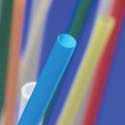
Thermoplastic tubing made with polyamide and polyimide copolymer thermoplastics is available. Engineered resins such as nylon 6/6, 11, 12, and PEBA are also used in the manufacturing process. The tubing is available in a range of made-to-order sizes, properties, and extruded forms. These forms range from ultra-thin-wall tubing to long continuous lengths of precision lay-flat tubing. The company's capabilities include multilumen bump tubing used for precision minimally invasivesurgical devices. Zeus Industrial Products Inc., Orangeburg, SC www.zeusinc.com
Corrosion testing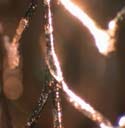
A provider of electrochemistry, microscopy, and surface-analytical services can evaluate corrosion performance and surface conditions of stents and catheters. The company can perform ASTM F2129 testing for corrosion susceptibility of small implant devices, ASTM F746 testing for pitting or crevice corrosion of implant materials, or other electrochemical corrosion tests designed to customer specifications. Optical microscopy, metallographic microscopy, and scanning electron microscopy are all available. X-ray photoelectron spectroscopy can be used to quantitatively characterize the elemental and chemical nature of the surfaces of implantable devices, including surface oxides, stains, contamination, or surface treatments.Anderson Materials Evaluation Inc., Columbia, MD www.andersonmaterials.com
Tubing assembly and production
A company offers equipment for the production and assembly of tubing. The Model 125B-1 tube cutter is designed to cut plastic, rubber, and elastomeric tubing from a minimum of 3 in. up to any length and up to 2 in. diam. A benchtop pneumatic press features two-handed, antitiedown start switches for operator safety. The Model 685H tube expander softens tubing without splitting the ends by using controlled heat; another tube expander comes with standard and 90° jaw sets. The company's solvent dispenser enables the uniform application of solvent to tubing parts without blocking tube passages.Lakeview Equipment Inc., Northbrook, IL www.lakeviewexpanders.com
Contract catheter manufacturing
A company provides catheter design and engineering support for medical device OEMs. Tipping, drilling, neck-downs, custom injection molding, and assembly are all conducted within cleanroom environments. The company specializes in projects requiring complex shapes or designs. Process documentation and validation is conducted on all projects.MedConnection LLC, Phillipsburg, NJ www.medconnection.net
Catheter-manufacturing systems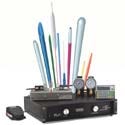
Precision instruments for catheter manufacturers are available. The PIRF II catheter-manufacturing system produces small-profile catheters by concentrating heat in areas as small as 1 mm for butt-weld applications and smaller for tipping applications. The PIRF III system features increased power over the PIRF II for multiple-part tipping and forming of large-profile catheters. Platforms are available for tipping up to four parts in one cycle. Both devices incorporate the company's patented temperature control systems.Sebra, Tucson, AZ www.sebra.com
Laser cutting workstation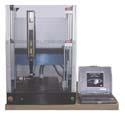
A fully enclosed CO2 laser desktop micromachining workstation is designed for cutting catheter tubes. Features include x-y and rotational axis using brushless servomotors, a gas-jet nozzle, vapor exhaust, an automatic door, stand-alone operation, and a Visual Basic front end for interfacing. The user can laser cut profiles in multilumen plastic catheter tubing that would not be possible by punching, drilling, or grinding.Flying Optic Lasers, Bonney Lake, WA www.flyingoptics.com
Tube coiling and banding
An automatic tubing coiler measures, cuts, and bands together flexible tubing of various diameters. The portable Model 520 pulls tubing from a spool onto two adjustable posts, retaining its shape, then cuts coils 21- to 172-in.-long, assembling as many as 1800 units an hour. Connector fittings may be automatically installed in the tubing ends.Castle Engineering Company, Inc., Golden, CO www.castleeng.com
Direct-drive rotary stage
A direct-drive rotary stage features a brushless motor and an integral pneumatic collet chuck. The ASR1100 rotary stage accepts ER16-series collets in multiple sizes, supporting tube diameters from 0.5 to 10 mm. The collet is retained with a threaded retaining cap that enables quick changeover to different tube diameters. Air pressures up to 40 psi are delivered through a frictionless, sealless rotary union to the collet assembly. The direct-drive brushless motor requires minimal maintenance and provides rapid acceleration.Aerotech Inc., Pittsburgh, PA www.aerotech.com
Catheter laser bonder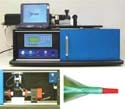
Laser equipment is designed for proximal and distal catheter balloon bonding, soft-tip attachment, andshaft bonding. The bonder has four program types: manual, static, dynamic, and multistep. Laser power, movement, duration, travel speed, and spindlerotational speed are based on the program selected.
The unit features dual precision spindles, a soft-touch clamp, a large through bore, and an in-line diode laser pointer. No programming experience is needed to operate the bonder. Maximum laser power is 10 W.Advanced Process Engineering, San Diego, CA www.ape-usa.net
Microabrasive blasting
A company offers microabrasive blasting equipment to manufacturers of catheters and stents. Microabrasive blasting with sodium biocarbonate media is used in catheter manufacturing to remove polymer coatings from small selected areas and to remove PTFE coatings from catheterguidewires.
The use of other abrasive media to prepare surfaces for bonding and coating adhesion is another application. Blasting is also used by stent manufacturers to remove unwanted materials without altering device geometry, and to lightly texture stents prior to applying special coatings.Comco Inc., Burbank, CA www.comcoinc.com
Catheter design and manufacturing
A company has developed several core technologies for the design and manufacture of catheters to deliver stents and other therapeutic devices. Current and previous design and manufacturing projects include PTCA, PTA, sizing, and valvuloplasty balloon catheters, ASD and PFO delivery catheters; infusion and microcatheters; debris-trapping catheters; and various urethral catheters. All design and manufacturing processes including extrusion, bonding, molding, and assembly are completed in-house.Minnesota MedTec Inc., Minneapolis, MN
www.minnesotamedtec.com
Copyright ©2004 Medical Product Manufacturing News
You May Also Like


